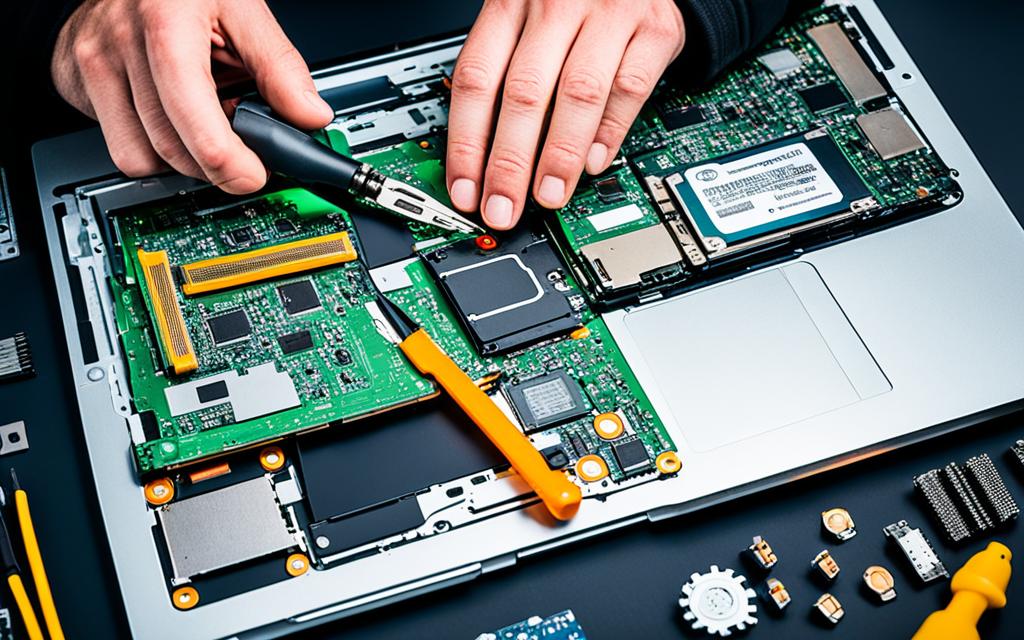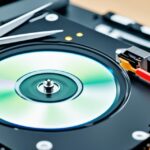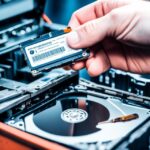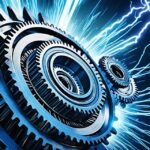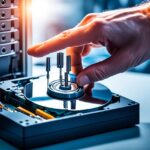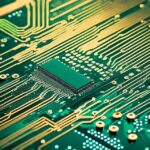Table of Contents
If your hard drive (HDD) breaks, it can feel very stressful, especially if you have important data on it. Knowing how to repair a HDD quickly is key to avoid losing your data forever. There are many ways to fix hard drives, helping to keep your data safe.
This guide will show you easy ways to find and fix problems with your HDD. It will explain what often causes these issues and give you tips to fix them well. By following these steps, you can save both time and your data. Trying these methods can lead to finding solutions for data recovery, a task that seems hard for many12.
Key Takeaways
- Common signs of hard drive failure include unusual noises and non-responsiveness.
- Logical damage accounts for 60% of data loss cases, and most can be recovered with the right software.
- Physical damage constitutes 40% of failures, often requiring professional help for recovery.
- Initial steps involve verifying the drive’s failure through sound and recognition tests.
- Consulting a professional can be costly, often two to three times the original drive’s value.
Understanding Hard Drive Issues
Knowing the signs of a failing hard drive can save your data. Many see HDD malfunction symptoms like clicking sounds. These noises often mean big problems. Slower performance and errors also hint at trouble, showing hard drive problems. It’s vital to recognize hard drive signs of failure early to avoid losing data forever.
Common Signs of Hard Drive Failure
Several HDD malfunction symptoms warn of hard drive failure. Here are the main ones to look for:
- Repeated clicking noises or beeping sounds
- Frequent system crashes or freezing
- Files exhibiting corruption or becoming inaccessible
- Unusual vibrations or overheating during use
Spotting these signs means it’s time to act. You can try diagnostic tools or check hardware connections. For extra help on hardware, check out this guide here.
Types of Hard Drive Damage
Hard drives suffer from logical or physical damage. Viruses and software problems cause logical damage. Physical damage comes from things like broken parts. Knowing these can help avoid bigger problems and data loss. It’s key for everyone to be aware of hard drive problems.
Using Windows CHKDSK can fix logical issues. For serious physical damage, you might need experts. By being aware, you can protect your data and improve your computer use34.
How to Fix Broken HDD: Initial Steps
Fixing a broken hard drive starts with some important first steps. First, make sure the hard drive really is broken. You might hear odd noises or see it won’t start your computer. Then, check the HDD’s connections. Make sure all cables are plugged in properly. Also, think about the power supply to the hard drive.
Verify the Failure
To find out if your hard drive is broken, listen for strange sounds. Using your computer’s BIOS for tests or third-party tools helps confirm if it’s working or not.
Check Hardware Connections
Next, closely look at hardware connections. Ensure SATA or USB cables are well plugged in. Sometimes, unplugging and replugging fixes the issue. Pay attention to the power supply too, as bad power can harm the drive.
Perform a Visual Inspection
Looking at the hard drive might show damage like scorch marks or cracks. It’s important to clean any dust to avoid overheating. Realising these signs early is key to fixing or getting the right help. For more on fixing hard drives and servers, see server optimisation5.
Methods for Fixing Logical Damage
Fixing logical damage on a hard drive can be tough. Yet, various effective ways exist to bring back your data and fix the drive. These include using built-in tools and antivirus programs designed to find and fix mistakes. You don’t need to physically touch the hardware.
Using Disk Check Utility
The disk check utility comes with Windows. It checks your file system for errors and fixes them. This is key for repairing logical damage.
To use it, start a scan from your hard drive’s properties menu. It spots and mends errors that impact performance or file access. Using this tool regularly helps your hard drive run smoothly.
Employing CMD CHKDSK Command
The CMD CHKDSK command is another great tool for tackling logical damage. It scans your hard drive thoroughly and can fix bad sectors. Bad sectors are spots where data might get corrupted.
To run it, open the command prompt as an admin and type chkdsk /f. This fixes file system errors and keeps your drive in good shape. Exploring its more advanced options offers even deeper scans.
Running Antivirus Scans
Antivirus scans are vital for keeping your drive safe from malicious software. A good antivirus can find and get rid of threats to your data’s safety. Scan your drive often to keep malware at bay.
Doing so helps avoid system problems and data loss. Many antivirus programs now include features for fixing damaged files. They’re an important part of keeping your computer healthy.
Logical hard drive failures often occur in devices that still spin up without unusual noises. Consequences of logical damage can include inability to boot, blue screens, and data recovery failures.6
In short, you need to be proactive to handle logical damage. Using the disk check utility, CMD CHKDSK, and regular antivirus scans will keep your system running well.
| Method | Description | Benefits |
|---|---|---|
| Disk Check Utility | A built-in tool for scanning and repairing file system errors. | Enhances system performance and prevents long-term issues. |
| CMD CHKDSK Command | A command-line utility for in-depth scans and bad sector recovery. | Offers comprehensive error correction and disk health monitoring. |
| Antivirus Scans | Security programs that detect and remove malware. | Protects against data corruption and maintains overall system security. |
Techniques for Repairing Physical Damage
Fixing a hard drive’s physical damage needs careful work on connections and components. It starts by checking and fixing hardware connections. Bad connections can really slow down the drive, or worse, make it fail. Making sure connections are good can avoid some damage risks.
Inspecting and Replacing Hardware Connections
It’s important to look for any visible damage signs. Things like burns, marks, or dents on the circuit board are bad news7. If connections don’t look right, changing them can make the drive work better. Taking action early is key to repairing physical hard drive damage.
Switching Connection Ports
At times, the problem might be with the port, not the drive. Using a different port can show if the first port was the problem. This easy step can help avoid unnecessary work and identify bigger issues that need experts.
Consulting Professional Services
If problems still happen, it’s time to get expert help. They know how to safely fix complicated damage. Using specialists means delicate fixes, like head swaps, are done right8. They usually have a better chance of fixing severe hard drive problems9.
Data Recovery Options for a Broken HDD
Trying to get back data from a broken HDD may seem hard. But, there are many ways you can do this. Knowing what to do can lessen worry if you lose data.
Using Data Recovery Software
If your hard drive isn’t working, recovery software can be a big help. There are many programs out there made to get back lost files. One good choice is Disk Drill. It can make exact copies of your drive and get back data from drives that have stopped working or are damaged. Using these methods can really help you get back your data with less harm to your drive.
Data corruption is common, and it can mess up not just files but the whole system. This might make the drive unreadable10. If you run into this issue, try recovery software first. It could save important data in emergency situations.
When to Seek Professional Data Recovery Services
Sometimes, if there’s physical damage, you need expert help. This is true if your hard drive needs special care in a cleanroom10. Data recovery by experts usually costs no more than £850. Prices range from £300 to £500, even if you don’t need extra parts11. When you notice warning signs, like a lot of bad sectors, it’s time to act.
For minor external damage, you might fix it yourself if the computer still reads the drive. But, for serious problems, get professional help right away.
| Recovery Option | Description | Best For | |
|---|---|---|---|
| Data Recovery Software | Utilises programs to recover lost files from corrupted drives. | Corrupted files, accidental deletions | |
| Professional Data Recovery Services | Involves specialists using advanced methods in controlled environments. | Physically damaged drives, severe logical corruption /, ftr> DIY Recovery Methods |
Minor physical issues, superficial mild damage t/m trl> desired table> Knowing the different ways to recover data helps you make smart choices. It’s always good to have backups to prevent losing data1011. ConclusionFixing a broken HDD is key for keeping your data safe. We’ve looked at various hard drive problems. These range from usual failure signs to repair methods for both software and hardware issues. Being able to spot problems like odd noises or slow performance helps greatly in saving your data. It’s critical to act fast because issues such as *bad sectors* or corrupt files can get worse quickly. You have options like using recovery software or getting help from experts for tough cases. It’s also a must to regularly back up important files. This way, you protect your data from sudden loss and prevent big problems. Dealing with hard drive troubles means being proactive and having the right tools. Knowing what to look out for and how to fix problems is key. Quick actions and frequent maintenance are vital. They help keep your storage devices running well and your precious data safe. This leads to a happier ending for your data’s story121314. FAQWhat are the common signs that my hard drive is failing?If your hard drive makes unusual clicking noises, it may be failing. Sluggish performance and frequent error messages are also warnings. Signs like power surges and overheating are important too. How can I diagnose a broken hard drive?Begin by listening for clicking noises to diagnose a broken HDD. Make sure the hardware connections are secure. Also, look for physical damage, such as scorch marks. What methods can I use to fix logical damage on my hard drive?To fix logical damage, start with the Disk Check utility in Windows. You should also use the CMD CHKDSK command for a deeper scan. Don’t forget to run antivirus scans to check for malware. What steps should I take to repair physical damage to my hard drive?Check and replace any damaged hardware connections first. Trying different connection ports may also help. If these steps don’t work, it’s wise to seek professional help. Be cautious to avoid further damage. What are the best data recovery options for a broken hard drive?Try using software like Stellar Data Recovery or Wondershare Recoverit for data recovery. Sometimes, if the issue is serious, professional services are needed. These services can help when software can’t. How important is it to back up my data regularly?Backing up your data regularly is very important. It safeguards against loss due to hard drive failure. A good backup strategy minimises the risk, keeping your data safe. |
Source Links
- https://www.wikihow.com/Fix-a-Physically-Broken-Hard-Drive – How to Fix a Physically Broken Hard Drive: 13 Steps
- https://techcommunity.microsoft.com/t5/windows-11/how-to-recover-data-from-a-corrupted-hard-drive-on-windows-11/td-p/4091084 – How to recover data from a corrupted hard drive on Windows 11
- https://www.stellarinfo.com/blog/how-to-repair-corrupted-hard-disk-without-formatting/ – How to Repair Corrupted Hard Drive Without Formatting?
- https://www.lifewire.com/check-and-fix-hard-drive-errors-3506860 – A DIY Guide to Help You Troubleshoot and Repair Drive Errors on a PC
- https://recoverit.wondershare.com/harddrive-errors/how-to-fix-a-broken-hard-drive.html – How To Fix a Broken Hard Drive and Recover Data With Ease
- https://www.gillware.com/hard-drive-data-recovery/logical-hard-drive-failure-recovery/ – Logical Data Recovery Services | Gillware Data Recovery
- https://scot-comp.co.uk/repairing-physical-damage-to-desktop-hard-drives/ – Repairing Physical Damage to Desktop Hard Drives
- https://www.linkedin.com/pulse/how-recover-data-from-physically-damaged – How to Recover Data from a Physically Damaged Hard Drive
- https://superuser.com/questions/387459/how-to-repair-or-recover-data-from-a-dropped-portable-external-hard-drive – How to repair or recover data from a dropped portable external hard drive
- https://www.cleverfiles.com/howto/dead-hard-drive-recovery.html – How to Recover Data from a Dead or Damaged Hard Drive (2024)
- https://superuser.com/questions/1765126/hard-disk-failed-no-backup-how-to-proceed-with-data-recovery – Hard disk failed, no backup – how to proceed with data recovery?
- https://www.diskgenius.com/how-to/external-hard-drive-corrupted-and-unreadable-fix.php – External Hard Drive Corrupted and Unreadable Fixed without Data Loss
- https://hdsentinel.com/blog/how-to-fix-a-hard-drive-failure – How to Fix a Hard Drive Failure – Hard Disk Sentinel Blog
- https://www.cleverfiles.com/howto/repair-corrupted-external-hard-drive.html – Repair Corrupted External Hard Drive Without Losing Data

